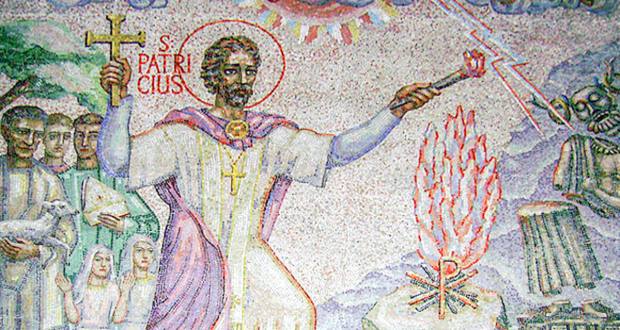Although March 17 has become something of an unofficial holiday in honor of St. Patrick, not everyone knows the fascinating history of the man himself.
St. Patrick is the patron saint of Ireland, although, ironically, he was not born in Ireland. According to History.com, Patrick was born in Great Britain in the 4th century to wealthy parents. Although his father was a deacon, the family was not religious. It is believed that Patrick’s father took on the clergyman role for its tax incentives.
So, how did St. Patrick end up in Ireland? Unfortunately, not under the best of circumstances. Patrick was kidnapped at age 16 by Irish raiders during an attack on his family’s estate, brought back to the thieves’ home country and put to work as a shepherd.
Christianity became a means of comfort and hope to Patrick. He revealed in his writings that after more than six years of being a prisoner, he heard a voice, whom he believed to be God, urging him to leave Ireland. He escaped back to Britain and eventually reunited with his family but claimed an angel came to him in a dream and encouraged him to return to Ireland, this time as a missionary. It’s believed that St. Patrick died on March 17, 460 A.D., which is the reason for the holiday’s annual date. Although he was not initially declared a saint because of the period in which he lived, his efforts to help spread Christianity granted him saint status by popular acclaim.
Patrick dedicated more than 15 years of his life to religious studies and went on to become an ordained priest. He taught the word of the Lord but made a point to weave Irish traditions into his Christian teachings as a way to encourage more Irish people to convert to Christianity. One way he did this was by laying a sun (a pagan Irish symbol) over the traditional Christian cross, creating what is now recognized as the Celtic cross.
St. Patrick arguably is best known for illustrating the meaning of the trinity with a shamrock. A shamrock, he explained to his followers, is made up of one stem and three leaves, just as the Christian God is believed to be one entity with three persons. Today, the shamrock is a symbol of Ireland, representative of Irish culture and luck (especially the rare four-leaf clover).
–Alan Goforth | Metro Voice
 Metro Voice News Celebrating Faith, Family & Community
Metro Voice News Celebrating Faith, Family & Community









